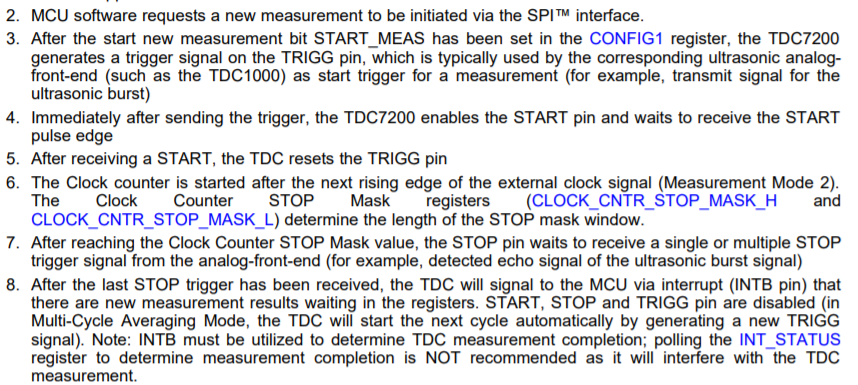HI,
TDC7200 explains Calculating Time of flight in chapter 8.4.2.1.1. and would like to know all of delay factor from ToF time such as SPI communication time.
1) How will it take time to set MEAS_COMPLETE_FLAG in INT_STATUS after receiving STOP?
2) The chapter 8.4.2.1.1. in datasheet explain how to calculate the ToF time and EVM can calculate the time. Will it include SPI time?
e.g. If the ToF time from start to stop is 19us. May system have 19us + SPI time(=50ns * 16 pulse)?
Regards,
Nagata.



